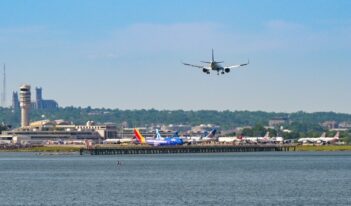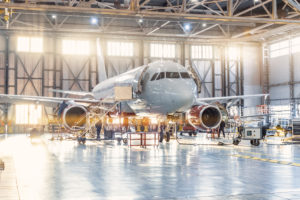
Scholar urges Congress to redefine common carriage to promote flight-sharing platforms in the United States.
If you are frustrated by the increasing cost of flying, would you consider joining a ride-sharing platform, like Uber, but for airplanes? The company Flytenow offers such a platform, connecting passengers with private FAA-licensed pilots.
But the Federal Aviation Administration (FAA) quickly ended the Flytenow platform in 2014, claiming that it encouraged illegal “common carriage” operation.
The FAA currently restricts the right of private pilots to participate in cost-sharing. It defines “common carriage” as the “holding out of a willingness to transport persons or property from place to place for compensation” and holds common carriers to a high regulatory standard.
In his paper, Christopher Koopman from the Mercatus Center at George Mason University argues that Congress should redefine the common carrier definition to allow companies like Flytenow to create a more advanced market for aviation services without the burdens imposed by the common carrier standard.
Koopman stresses that Flytenow’s founders took proactive measures to comply with the FAA’s strict guidelines. The company permitted payment only for prorated shares of flight costs, restricted the platform from public use, and limited its availability to members who could join scheduled flights but could not request a trip at their convenience. Flytenow still could not persuade the FAA, however, which informed pilots operating under the Flytenow framework that they were operating illegally.
Remarkably, Koopman notes that the FAA has allowed pilots to post flight information on bulletin boards for flight-sharing purposes, but has prohibited them from communicating flight-sharing information over the Internet.
Koopman proposes that Congress first define the term “private carrier” as a person providing air transportation who either does not exceed the pre-defined compensation threshold, or, alternatively, who agrees upon contractual terms that differ from standard common carrier terms.
Next, he recommends that Congress define “common carrier” as a “person providing air transportation from place to place under the common law’s default rules, not as a private carrier.” Koopman argues that this distinction would re-categorize flight-sharing platforms like Flytenow into the private carrier category and could revive the industry, making more efficient use of valuable physical and human capital.
Notably, because the definition of common carriage exists in agency guidance rather than in a formal regulation, the FAA can amend the definition at any time without going through the notice and comment process. Koopman urges the agency to relax its current definition and adopt the more flexible common law definition of common carriage.
To illustrate the common law approach, Koopman points to Bukton v. Tounesend, a 14th Century English contract law case involving the transportation of horses across an estuary, which established the foundational precedent in the common law definition of common carriage. In that case, a ferryman overloaded his boat, causing one of the horses to fall overboard and perish. The British court held that even though the parties had not created a contract to apportion liability for losses, the ferryman still had a duty to transport the goods safely. But these default rules only apply in the absence of a contract stating otherwise.
Unlike the FAA’s strict common carrier definition, the default obligations implied by the common law’s common carriage definition are nonbinding, permitting parties to contract around them.
The FAA’s current common carrier definition, by contrast, makes it impossible for pilots and passengers to decide for themselves how to structure their relationship. Koopman argues that by broadening the definition to fit the Bukton interpretation, Congress could allow parties to circumvent the common carriage designation—and its associated safety requirements—through contracts, providing an opportunity for innovators in the aviation industry to design new service models at a cheaper cost.
Critics of flight-sharing platforms like Flytenow raise safety concerns about deregulating flight-sharing in the United States. For example, many states require ride-sharing companies like Uber and Lyft to obtain special licenses, and all states have additional requirements for taxi and limousine drivers, such as passing a taxi or chauffeur license knowledge test or participating in a training course and obtaining a special operator’s license.
Flytenow, however, did not obtain a special license itself, nor did it require its pilots to pass any additional tests or obtain a commercial pilot license. For this reason, opponents of the Flytenow platform argue that a passenger would be more like a hitchhiker than a protected customer.
Koopman points to the European Aviation Safety Agency, which permits flight-sharing, as an example for the FAA to follow. The EU requires all passengers—including the pilot—to split the direct cost of flying and specifies that a maximum of six people may share the costs.
Moreover, annual costs such as maintenance, insurance, and ongoing operating fees may not be included in any cost-sharing arrangement under EU rules. Notably, about 10,000 people participate in the European flight-sharing industry and Koopman says that no accidents or fatalities have been reported. In fact, the EASA works with flight-sharing platforms to promote safety by publishing pilot checklists and developing other helpful safety tools.
Ultimately, Koopman advocates for flight sharing as a way to improve the aviation market and general aviation safety by decreasing the cost of flying and encouraging pilots to practice their flight navigation skills.



